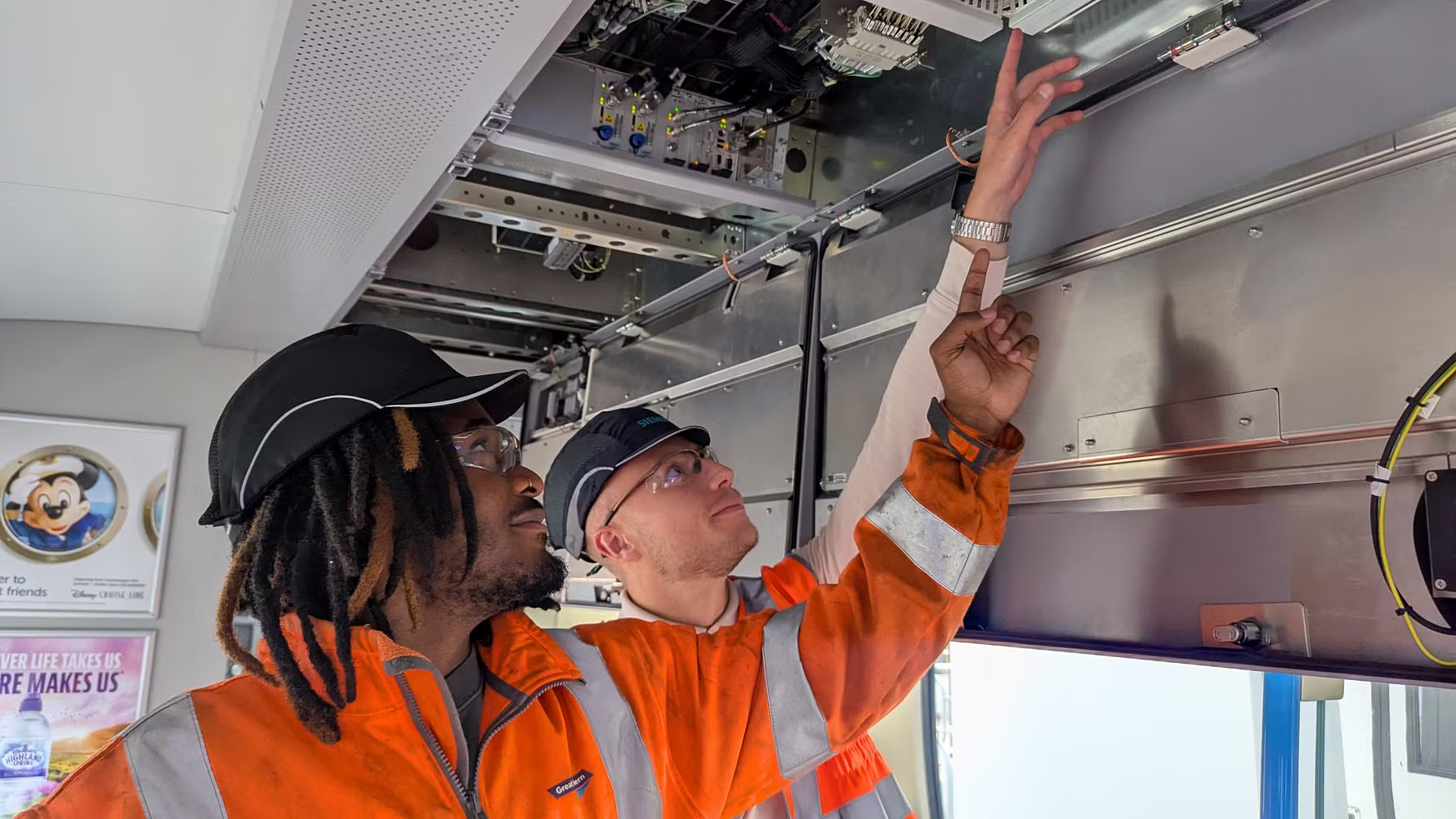CER’s commitment and involvement with the progress of ETCS throughout Europe
Posted: 31 May 2011 | | No comments yet
The legal environment of the European rail system has dramatically changed during the last two decades. The three rail packages have caused a completely new structure of the railway business and induced an introduction of a number of new actors on the European railway market. Furthermore, in order to enable railway stakeholders and their customers to fully benefit from the advantages deriving from the establishing of an area without internal frontiers, the interoperability of the national rail networks as well as access thereto has been set out as the ultimate target.
The legal environment of the European rail system has dramatically changed during the last two decades. The three rail packages have caused a completely new structure of the railway business and induced an introduction of a number of new actors on the European railway market. Furthermore, in order to enable railway stakeholders and their customers to fully benefit from the advantages deriving from the establishing of an area without internal frontiers, the interoperability of the national rail networks as well as access thereto has been set out as the ultimate target.
The legal environment of the European rail system has dramatically changed during the last two decades. The three rail packages have caused a completely new structure of the railway business and induced an introduction of a number of new actors on the European railway market. Furthermore, in order to enable railway stakeholders and their customers to fully benefit from the advantages deriving from the establishing of an area without internal frontiers, the interoperability of the national rail networks as well as access thereto has been set out as the ultimate target.
CER pushes for ERTMS
However, the current situation prevents free cross-border circulation of trains mainly because of incompatibility between traction units and trackside signalling systems and because of numerous national train protection systems. Thus European rail interoperability is unthinkable without a unified automatic train protection system. This is the aspect which CER fully recognises. As such, the gradual implementation of the European Rail Traffic Management System (ERTMS) is one of CER’s priorities. CER’s involvement in the European ERTMS deploy – ment is manifold and contributes to:
- Development of ERTMS specification
- Setting the legal provisions
- ERTMS deployment coordination
- Development of funding schemes
ERTMS specification development
The idea to develop the unified automatic train protection system was born more than 20 years ago, initiated by railway companies and financially supported by EURET (European Research for Transport). Today, UIC and its research entity – the European Rail Research Institute in Utrecht – played the pivotal role in the development of the initial specification.
The date of the early development coincides with the publication of the Council Directive 91/440/EEC of 29 July 1991 on the development of the Community’s railways, aiming to facilitate the adoption of the Community railways to the needs of the Single Market and to increase their efficiency.
Without surprise the first Interoperability Directive (96/48) on the trans-European highspeed rail system lists the ERTMS (i.e. ETCS + GSM-R) characteristics among the basic parameters for achieving interoperability. The technical specifications for Control-Command and Signalling subsystem (CCS TSI) have consequently specified ERTMS as the principle signalling part guaranteeing interoperability.
The CCS TSI has been developed by the Association of European Railway Interoperability (AEIF). This association groups all stakeholders from the railway sector, mainly UIC and UNIFE but including CER as well. AEIF had the mandate to maintain the ERTMS specifications and managed their change control process.
The Regulation (EC) No 881/2004 of the European Parliament and the Council of 29 April 2004 establishing a European railway agency and the consequent appointment of representative bodies has completely changed the responsibility for further ERTMS specification development.
AEIF passed on its activities to the European Railway Agency in 2005. CER (together with EIM) took over the principal responsibility to represent railway undertakings and infra – structure managers vis-à-vis ERA.
CER members appointed experts to represent the membership in the newly formed ERA Working Party for the Command-Control and Signalling TSI, ERTMS specification change control management, ERTMS operating rules and a number of special ad-hoc subgroups managing a variety of particular subjects like the TSI editing, ETCS functional requirement specification, interface between vehicles and trackside signalling etc.
The amount of work expanded heavily over the past six years, demanding systematic coordination and wide support of CER members.
Over the past years, CER’s experts helped to stabilise the ETCS specification known as 2.3.0d – the first truly interoperable baseline allowing both the infrastructure managers and railway undertaking to acquire the equipment guaranteeing principle onboard – trackside compatibility across Europe.
Today’s activities are focused on the completion of the ETCS Baseline 3 specification as well as on the finalisation of testing specification, which is essential for the proof of the product conformity with the harmonised specification.
The ETCS Baseline 3 will offer functionalities offering both specific features of along conventional lines (e.g. level crossings) as well as ‘low cost’ trackside ERTMS deployment, known as the ETCS Limited supervision.
Setting the legal framework
The principal regulatory framework for ERTMS is provided through the Interoperability Directive 2008/57, which defines technical subsystems as well as corresponding processes for their implementation. The technical specifications for interoperability relating to the controlcommand and signalling subsystem (CCS TSI) then set the provisions applicable both to the infrastructure and rolling stock of the highspeed and conventional European network.
The first set of the CCS TSIs (for high-speed systems) has already been elaborated under the direct involvement of railway companies, members of UIC and CER, in the framework of the above mentioned AEIF. The technical specifications for the trans-European conventional rail system were completed a few years later in 2006, at the time when the responsibilities for the TSI development were handed over from AEIF to the European Railway Agency. Thus, as from 2005, CER as the appointed railway representative body, took over the responsibility to represent railway undertakings and infrastructure managers in the process of the TSI development and revision.
The original set of the CCS TSIs for high-speed and conventional rail systems solely addressed the infrastructure and rolling stock for the trans- European network, in accordance with the provisions of the two interoperability directives – 96/49 for high-speed and 2001/16 for conventional rail system. Following the recast and merge of these directives and the publication of the Directive 2008/57, the geographical scope of the interoperability has been extended to the entire European rail system. Consequently, the CCS TSIs are currently undergoing the process of the revision, aiming to merge both high-speed and conventional rail subsets.
ERTMS deployment coordination
The mandatory provisions for the implementa – tion of the CCS TSI (similarly as in the other technical specifications for interoperability) are given in Chapter 7 of the CCS TSI entitled ‘Implementation of the TSI Control-Command’. This chapter outlines the strategy and the associated technical solutions for the implementation TSI, notably the conditions underpinning the migration towards ERTMS.
Chapter 7 was subject to regular updates, following the development of ERTMS as well as the extension of the geographical scope of the interoperability.
In the case of the European high-speed network, the ERTMS deployment is on the one hand a mandatory component of all new trackside constructions as well as obligatory part of new vehicle supplies. On the other hand, the European conventional network is largely stable and not undergoing any rapid renewal that would lead to progressive ERTMS implementation driven by the network renewal only.
That’s why an instrument had to be developed in cooperation between the European Commission and manufacturers, railway undertakings and infrastructure managers. Thus, on 17 March 2005, the European Commission and rail sector representatives, including CER, signed a Memorandum of Understanding (MoU) establishing the basic principles of an EU-wide deployment strategy for the European Rail Traffic Management System (ERTMS) with the objective to define the contribution of the actors in order to ensure the progressive setting up of an ERTMS equipped network within 10-12 years.
In order to facilitate the implementation of the aforementioned MoU, the European Commission appointed Mr. Karel Vinck in July 2005 to act as ERTMS coordinator. An approach based on the coordinated deployment of ERTMS along important freight corridors and key highspeed lines has also been promoted. In particular, six freight corridors were subject to further analysis.
CER and its members have always been strong supporters of the concept of pan- European corridors, creating the principal passenger high-speed and freight conventional network. CER initiated a number of studies confirming the necessity to focus the investment onto the development of specific European routes that would bring maximum benefits for European rail freight operations. As a logical result, CER took the lead in creating the initial corridor teams in charge of the elaboration and principal analysis of data, expected performance, investment needs and ERTMS deployment benefits for each of the six corridors.
The corridor approach resulted in a robust structure of corridor management, supported in a number of cases by the Corridor European Economic Interest Groupings. The necessity to further streamline the administrative, funding, technical and operational processes for the corridors led to a new MoU in 2008.
The MoU between the European Commission and the European Railway Associations (CER, UIC, UNIFE, EIM, GSM-R Industry Group and ERFA) concerning the strengthening of cooperation for speeding up the deployment of ERTMS, was signed in Rome in July 2008. The new MoU focuses on the swift deployment of ERTMS along corridors (including stations, access to marshalling yards, terminals etc.) and underscores two additional complementary types of actions needed to further promote the development of rail freight transport – standardisation of the corridor parameters and harmonisation of operational rules.
The new MoU also encourages the completion of the national ERTMS deployment plans and set the principal orientation of the European ERTMS deployment strategy with the priority given to the rail freight corridors and terminals.
Consequently the Commission decision of 22 July 2009 amended Chapter 7 of the CSC TSI and defined a schedule for the ERTMS deployment at:
- Six rail freight corridors as defined in the MoU
- Connection to the main European ports, marshalling yards, freight terminals and freight transport areas.
In addition, all EU-funded projects shall involve ERTMS implementation as well.
Development of funding schemes
CER supports the acceleration of all steps that simplify cross-border operation and lead to a single European railway area. However, CER is fully aware of the cost intensity of both the trackside as well as on-board ERTMS assemblies which represents significant economical factor of the ERTMS extension in Europe.
The nature of the trackside and on-board implementation is different as the models of financing of infrastructure managers and railway undertakings are. It is therefore necessary to consider these differences in the projecting of actions for these two parties.
Infrastructure managers are requested to migrate to ERTMS along the priority lines at the shortest possible time. The prerequisite is an availability of the corresponding funding instruments, both on national as well as on the European level.
The TEN-T Executive Agency, set-up by the European Commission, launched two calls to facilitate the ERTMS installations along the priority corridors with an amount of €500 million in 2007 and 2009. CER appreciated this opportunity but underlined that the demand for both for the ERTMS equipment as well as for the necessary infrastructure upgrades, that would allow benefiting from an interoperable signalling system, is manifold higher and cannot be developed by infrastructure managers themselves. The additional financial instruments shall therefore be developed.
Railway undertakings, in particular freight operating companies, are exposed to harsh economic conditions which do not allow them to invest massively into the on-board ERTMS equipment. While the new locomotives are going to be supplied with the standard ERTMS equipment as from 2015, the retrofitting of the currently operated vehicles does represent significant costs that cannot be justified unless an economic incentive is available or a vehicle is dedicated to an operation along the line equipped solely with ERTMS.
As a consequence, CER decided to take twofold actions – on the one hand demanding the development of national plans to decommission the current train protection system, and on the other hand proposing provisions to reduce track access charges for ERTMS equipped trains.
The detailed plans of the legacy train protection system decommissioning would allow railway undertakings to direct their investments to the vehicles dedicated to operate along ERTMS corridors.
The principle of track access charge discounts is currently debated in the framework of the Commission’s proposal to recast the first rail package. In principle, CER supports the Commission’s proposal suggesting that the trains equipped with the European Train Control System (version 2.3.0d or higher) shall enjoy a temporary reduction of the infrastructure charge. This should however apply under the following conditions:
- Trains equipped with the European Train Control System (ETCS) running on the lines specified in the European deployment plan shall enjoy a temporary reduction of the infrastructure charge
- The calculation method of the track access charge discount must be as simple as possible, to avoid any unnecessary administrative burdens.
Finally, the reduction of track access charges for ERTMS equipped trains shall not lead to an overall increase of the infrastructure charges. The discount shall be treated as a bonus financed by state budgets; the cost neutrality must also be guaranteed for the infrastructure managers.
Conclusion
European rail interoperability is unthinkable without a unified automatic train protection system. CER fully recognises this aspect and thus supports the gradual implementation of the European Rail Traffic Management System (ERTMS). CER’s involvement in the ERTMS deployment is manifold. CER contributes to the development of ERTMS specifications, the setting of legal provisions, the coordination of ERTMS deployment as well as the development of funding schemes.
Looking at the future, it can be said that the ERTMS deployment is inevitable; it should however be managed in a way which is economically feasible for all market players.
The Community of European Railway and Infrastructure Companies (CER) brings together more than 70 railway undertakings, infrastructure companies and vehicle keepers from the European Union, Norway, and Switzerland, the accession countries (Croatia, Macedonia and Turkey) as well as from the Western Balkan countries.
Being based in Brussels, the association represents the interests of its members to the European Parliament, Commission and Council of Ministers as well as other policymakers and transport actors. CER’s main focus is to promote a strong rail industry that is essential to the creation of a sustainable transport system which is efficient, effective and environmentally sound.
About the Author
Libor Lochman graduated at the Transport University in Zilina, doctorate in electronics at the West-Bohemian University Plzen. He has been the Manager of the Czech railway test centre, since 2007 acting as the Deputy Executive Director at the Community of European Railway and Infrastructure Companies (CER). At CER, he is also responsible for the coordination of all activities related to the European Railway Agency (ERA).
Global Railway Review Autumn/ Winter Issue 2025
Welcome to 2025’s Autumn/ Winter issue of Global Railway Review!
The dynamism of our sector has never been more apparent, driven by technological leaps, evolving societal demands, and an urgent global imperative for sustainable solutions.
>>> Read the issue in full now! <<<
Issue
Related organisations
Community of European Railway and Infrastructure Companies (CER)







